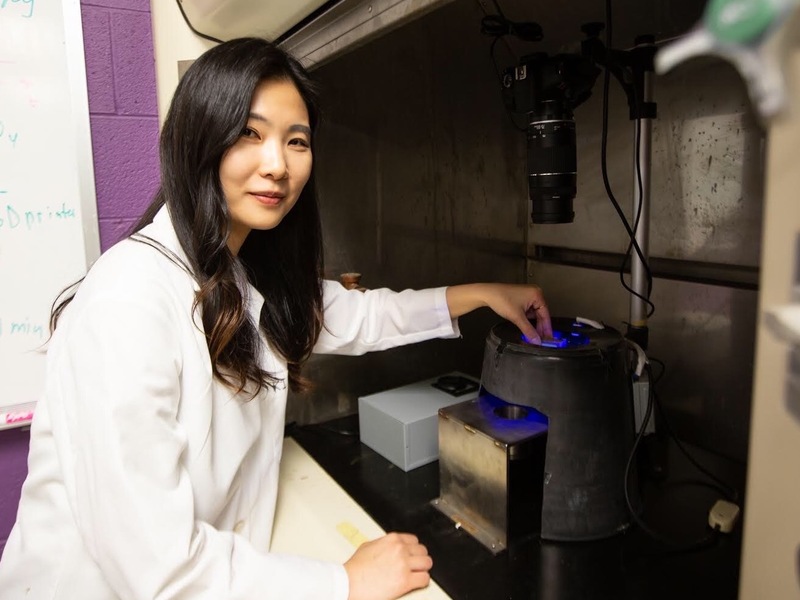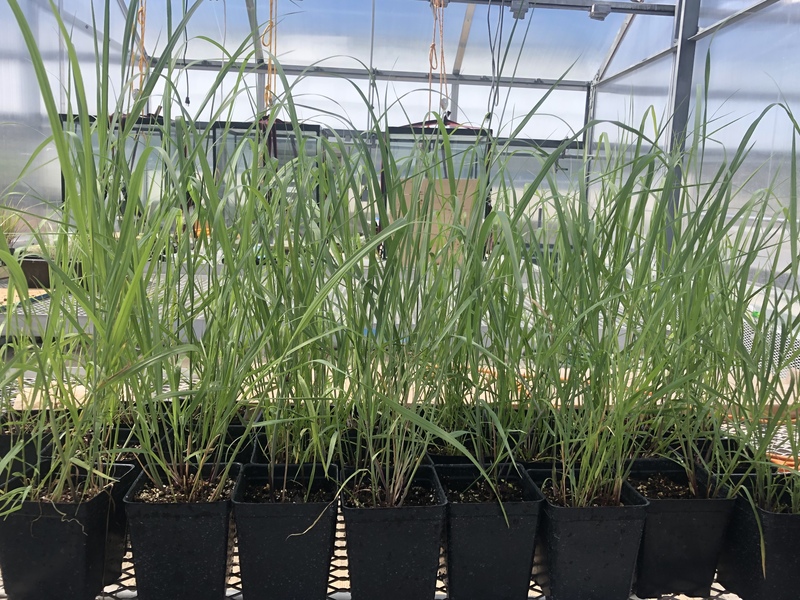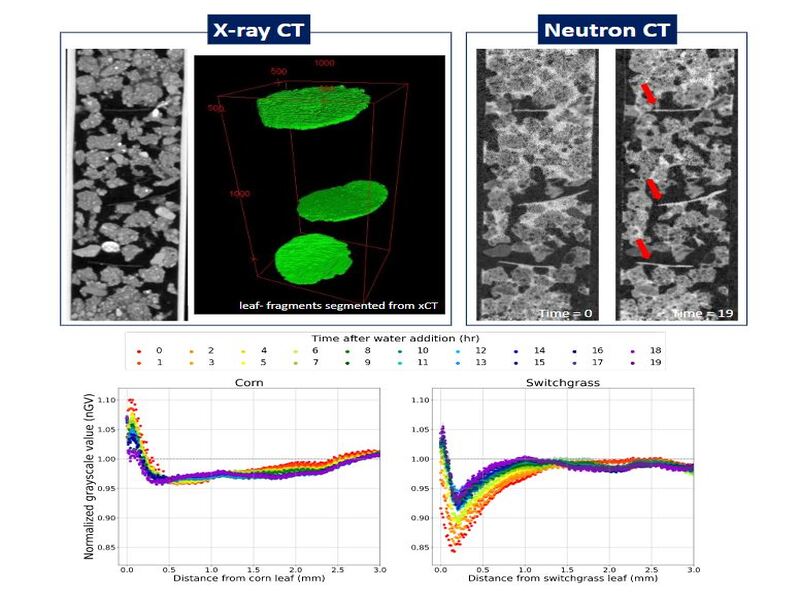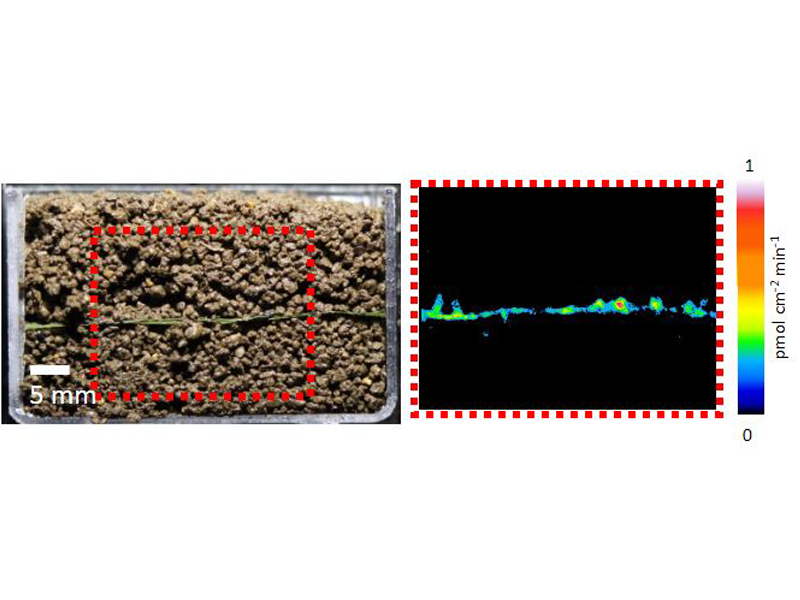Starting small to better understand key steps in the carbon cycle
December 12, 2022 - Adityarup "Rup" Chakravorty
Earth’s carbon cycle works on a global scale. But it can be affected by the tiniest of organisms: soil microbes. These microbes decompose organic matter like plant litter and dead organisms, and create simple carbon compounds. These simple carbon compounds can then be used by other organisms, or turned into gases (like carbon dioxide) and released into the atmosphere.
Much like us, soil microbes can be picky about where they live and work. “Just as we may prefer a certain range of temperature and humidity, soil microbes have their preferable conditions too,” says Alyssa Kim, a researcher at Cornell University.
Kim is the lead author of a new study that explores how soil conditions, like moisture level and pore size, can affect soil microbes. Understanding how different soil conditions impact microbial activity can give researchers a better handle on ways to increase soil health and fertility, and help combat climate change. For example, “it can be a critical part in reducing greenhouse gas emissions from agricultural fields after harvests,” says Kim.
Kim recently presented her work at the 2022 ASA-CSSA-SSSA annual meeting, held in Baltimore, Maryland.
Kim and her colleagues at Michigan State University compared microbial activity near corn and switchgrass leaf litter. Corn is a vital crop, and farmers in the United States planted nearly 90 million acres in the 2022 growing year. Switchgrass is a promising bioenergy crop with an expanding footprint. “Also, corn and switchgrass have different litter characteristics,” says Kim. “Litter chemistry affects how easily microbes can decompose different litters. The physical characteristics like texture can affect the water and air environment near litters.”
Kim and her colleagues found that corn and switchgrass litters differ in how they change moisture levels in the soil near them. “We found distinct moisture depletion 0.1 to 1.5 millimeter away from switchgrass residues,” says Kim.
To study this moisture distribution, Kim used a method called X-ray and Neutron computed tomography. This method works very similarly to medical CT scans. “It’s a very promising, non-destructive way to study soils and water in them,” says Kim.
It turns out, moisture content is one of the most important factors influencing soil microbial activity. That’s because one way that microbes decompose organic material, like leaf litter, is by releasing chemicals called enzymes. Different enzymes break down different materials. For example, an enzyme called beta-glucosidase can break down plant cell walls. Another enzyme called chitinase can break down the exoskeletons of insects and some fungi. Once the enzymes break down their target materials into simpler chemicals, soil microbes can feast.
“When soil moisture levels are optimal for microbes, they tend to produce more enzymes,” says Kim. That can lead to faster decomposition of leaf litter and the release of larger amounts of carbon dioxide. That’s exactly what Kim and her colleagues observed. Soil moisture levels were higher near corn litter, and decomposing corn litter released more carbon dioxide quicker than switchgrass litter.
Although the study focused on millimeter-scale observations, it has large-scale implications. “Studying these microscale dynamics can help us to understand what is actually happening in our vast corn fields, and also, in promising bioenergy cropping systems like switchgrass,” says Kim.
Kim also tested how soil pore size affects microbial enzyme activity. These pore sizes ranged from 10 to 30 micrometers, slightly smaller than the thickness of a single strand of most human hair. “It is crucial to study soil pore structures because that’s where soil microbes live,” says Kim. Kim used a method called Zymography, to map the activity of different enzymes. “We add some chemicals onto the soil surface. Such chemicals show fluorescence when decomposed, and that is how we detect the location of enzymes.”
Soil pore size affects different enzymes differently. Beta-glucosidase – the enzyme that breaks down plant cell walls – worked more efficiently in soils with smaller pores. On the other hand, chitinase enzyme activity was higher in soils with larger pore sizes. “These contrasting results tell us that what is decomposed in soils can depend on soil pore architecture,” says Kim. “That’s because there are different microbes living in pores of different sizes, producing different enzymes.”
Soils in farm fields have a mix of large and small pores, which indicates a mix of moisture levels and different microbes. “In the future, I would like to look at soil pores and moisture levels on larger scales and test how differences in moisture distribution affects the decomposition process,” says Kim.
This research was supported by Great Lakes Bioenergy Research Center, U.S. Department of Energy, Office of Science, Office of Biological and Environmental Research (Award DE - SC0018409); National Science Foundation Long-term Ecological Research Program (DEB 1832042) at the Kellogg Biological Station; Michigan State University AgBioResearch; and special thanks to Dr. Sasha Kravchenko and Kravchenko Lab at Michigan State University, as well as Anders Kaestner at Paul Scherrer Institute in Switzerland.




